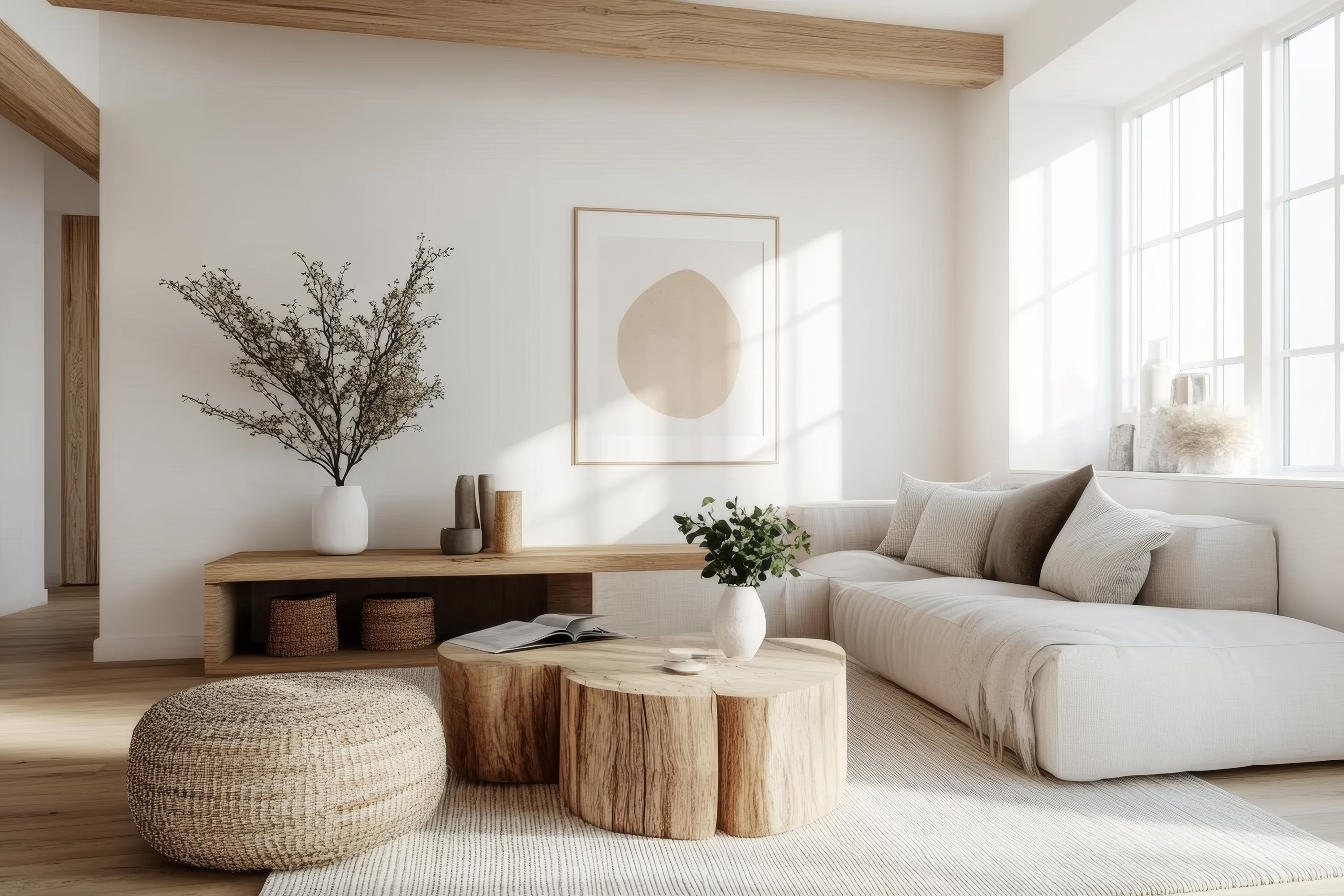- Blog
- Tips for Choosing Interior Paint Colors to Complement Your Furniture
Tips for Choosing Interior Paint Colors to Complement Your Furniture
Mar 01, 2021

It finally happened: After all of your HGTV watching, Pinterest browsing and Instagram scrolling, your inner interior designer is ready to paint some walls and give your home a whole new look. First … how fun! Second, get ready to do your homework. Before you commit to a color, you’ll want to make sure that it will actually work with what’s already in the room.
Don’t let the prep work put you off of your painting mission. Knowing how to choose the right interior paint colors to complement your home’s furnishings and finishes gets easier when you begin understanding the basics and that’s why we’re here. We’ll teach you what should go into your color consideration so you can ultimately choose the right one for your home.
Understand Color
The world is full of so many colors,so how do you narrow down your choices to what looks good in interior paint? This color wheel is actually the perfect place to start. With it, we’ll break it down to a few fundamentals:
Identify primary and secondary colors. On the color spectrum, primary colors include red, yellow and blue. These three colors can be mixed in certain amounts to create what are called secondary colors, which include green (yellow + blue), purple (red + blue), and orange (red + yellow).
Different colors create different moods. Color can truly have a psychological effect on your state of mind. So, when choosing colors, put some thought into how you use the room and how you want to feel while you’re in it. Red, orange and yellow are considered to be “warm” colors, which can evoke feelings of happiness, optimism and energy. Blue, purple and green are considered “cool” colors, which can be calming and even spark creativity.
Opposite colors make a good match. This sounds contradictory, but hear us out. Find the colors (or the colors closest to them) on the color wheel of the furnishings and fabrics in your home. The colors on the opposite side of the wheel will be the most complementary paint pairing for instance, yellow pairs with purple, blue with orange and red with green. Complementary colors can make each other appear brighter, can be mixed together to create a subdued hue, or they can be blended together to create shadows.
Once you have an idea, you can go to a paint store to look at color swatches. Their experts can also advise you on color combinations and can mix paints to customize a color for you.
Look for Inspiration
Now that you have a better understanding of color, it’s time to get inspired by how others use color and color combinations to suit a style that’s similar to yours. If you haven’t already, start looking for ideas on Pinterest, magazines, design websites, home decor catalogs and social media. You can also watch home design shows and online videos or observe what you like in your friends’ homes. Naturally, you’ll start to gravitate toward a certain color or color scheme and experience how it makes you feel.
Select Your Color Scheme
If the room you are wanting to paint is already furnished and decorated, take into account the style and colors of those furniture and decor pieces.. You can play into the color scheme you’ve already established when picking out your ideal paint color or consider more neutral tones for the wallsYou can play with browns and grays in a way that still looks updated and modern, and they will help the existing colors in your room pop.
If you are starting from scratch and have no furniture in your room, select three colors that appeal to you. From there, you can select the exact paint you need based on inspiration from your scheme. Remember to take the color wheel into consideration!
As we mentioned earlier, part of choosing the right color will depend on which room you’re gearing up to paint. If you are painting an office, you’ll probably want to select a warm color, which has a stimulating effect. On the flip side, a bedroom should feel relaxing so you’ll want to select cool colors that create that calming vibe.
Select Your Paint Finish
You’re not done just yet. Now it’s time to select a finish, which refers to how much light the paint’s surface will reflect. This is important to enhance the vibe that you’re trying to create in the room. Paint that reflects a lot of light will appear shiny and make a room brighter, which can create an energetic mood. Paint that reflects very little light will appear smooth and flat, making a room feel cozier.
Time to Make a Splash (of Color) in Your Space
Now that you understand the basics about interior paint color, picking the right ones for your home can become an exciting journey of swatch testing and even make you feel like your own self-made interior designer!
If you still need to fill an empty, freshly painted room with furniture or appliances, make it easy on yourself and start a lease-purchase agreement* with us. With more than 15,000 retailers offering Acima, you can take advantage of this lease-to-own alternative to furniture or appliance financing to shop now and make affordable payments while you enjoy your updated space.
For even more budget-friendly furnishing ideas, check out these articles:
It’s all to show you that you don’t have to go into debt to make your home look and feel like a million bucks!




